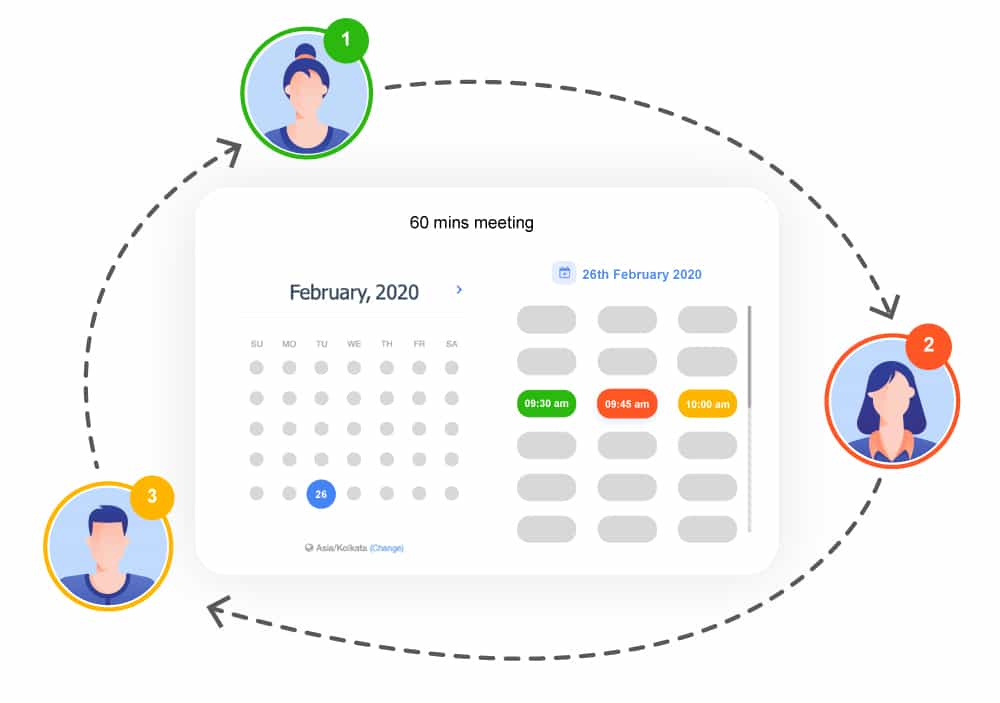In sales, lead distribution methods can be divided into “push” and “pull” approaches.
- The “push” method consists of immediately allocating leads to sales representatives.
- while the “pull” method allows sales reps to choose their prospects. A combination of the two encourages competition.
Factors such as your sales reps’ availability, location and performance can influence lead distribution decisions.
In this article, I present different methods, each with their advantages and disadvantages, and the factors to consider when defining your lead distribution!
Sommaire
Push & pull lead distribution methods
PUSH distribution of leads
The push method consists of assigning prospects directly to a salesperson’s queue, who then converts them into customers.
- Easy to understand
- Predictable
- Immediate allocation
- Less competition between salespeople
- Less pressure
- Does not take into account the availability of sales staff
PULL distribution of leads
The pull method consists in letting sales reps select the leads they want and handle them themselves. This is a much more selective method, allowing sales reps to target the leads they think they can convert.
- Sales reps only ask for leads when they’re ready
- Distribution can be limited
- Sales people have more control
- Some leads can be overlooked
- Slower lead attribution
PUSH & PULL lead distribution
The push & pull method consists in letting the leads contact the sales reps themselves, and the first sales rep to respond is responsible for converting them. The lead is neither allocated nor requested, but rather won by the fastest salesperson.
- Prospects are immediately called by the first available agent
- Highly flexible method that can be used with a variety of distribution models
Push lead distribution methods
The push Round Robin method
According to Craig Maxwell, CEO and co-founder of Salesbolt, “The push Round Robin method allows new lead registrations to be distributed fairly without having to allocate them manually”.
With this method, your leads are distributed evenly among your sales reps. If you have five sales reps, each of them will receive a lead according to their position in the queue. Once this cycle is complete, the next set of leads is allocated in the same order.

- Method considered fair
- Easy to understand
- Easy to install
- Very simplistic
- Fosters “I’m entitled to everything” thinking (“it’s my turn”)
There can be a Push & Pull version of the Round Robin method. Sales reps are contacted in order, and the first to respond wins the lead. The order changes with each new lead to ensure an even distribution. If no one responds, the order is reversed.
- More impartial
- More competitive
- Leads are called quickly
- No more sales representatives called than necessary
Skimming prospects: the skimming method
With the skimming method, the manager or top performer manually allocates each lead to the sales rep. In small organizations, this is quite common to guarantee lead conversion. The best leads go to the best salesperson.
It’s a lot more flexible than an automatic process. A human being (and even more so an experienced salesperson) knows the teams, knows how to read between the lines of a contact request, and so on.
- Sales effectiveness
- Flexibility
- Motivates sales staff
- May give rise to mistrust
Pull methods for lead distribution
Choosing your leads: the Cherry-picking pull method
Sales reps select the leads they want to process and leave the ones they don’t.
According to this method, some leads are more interesting than others. If you leave the choice of leads to your sales force, you run the risk of overlooking smaller or more complex leads.
- Very easy to implement
- First to claim” stimulates competition
- Leads are left pending until claimed
- Implies that some leads are not worth treating
Choosing leads blindly: the blind pull method
The blind pull method is similar to the Cherry-Picking method, except that agents can’t view a lead’s details before claiming it. With this method, sales reps choose their leads blindly.
- Requires agents to respond to all leads, creating more competition
- Leads that are not captured immediately are considered unattractive.
- Implies that some leads are not worth treating
Push & pull lead distribution methods
The Shark tank method
With the shark tank method, several sales reps are contacted about a lead (push), but the first sales rep to call is awarded the lead (pull). A notification is sent to the sales reps, calling on their speed to win the lead.
- Maximum competition
- Leads are always called quickly
- Promotes a form of meritocracy based on responsiveness
- Several sales reps are contacted, even if only one of them gets the lead
The Top producer method
Depending on the salesperson’s availability and performance, he or she is offered a lead or not. If he responds, the lead is assigned to him; if he doesn’t respond, the lead is proposed to another sales rep, and so on. This allows us to prioritize leads according to the salesperson’s performance.
- The best salespeople have more leads than others
- Leads are always called quickly
- Motivates sales staff to reach the top
- A salesperson’s performance can change over time
Factors to consider when defining lead distribution
Lead distribution based on availability
When you define your lead distribution, you can choose to do so according to the availability of your sales reps. A sales representative can only work with a prospect if he or she can give him or her the necessary attention, or has the time to do so.
Setting activity quotas is a good way of ensuring this.
Geographical sales sectorization
Depending on the business, you can divide leads by geographical area. Some sales reps have assigned territories and only deal with leads from their zone.
- Narrow focus, specialized expertise within a given territory
- Rewards long-term prospecting in the region
- Fewer salespeople available to respond
- Less competition
Breakdown by language & time zone
Another method is to allocate leads according to language. For example, allocate an English customer to a sales rep who speaks perfect English. Or according to time zone, depending on salespeople’s time slots and availability.
This method is well suited to international companies with a sector-based organization by country.
Lead distribution based on performance
You can also choose to distribute your leads according to the performance of your sales reps. With this method, the best salespeople will receive more leads to process than the others.
The only problem with this method is that it can demotivate some under-performing sales reps to improve their productivity.
Breakdown by expertise
The aim of this method is to allocate leads according to product, service or sector of activity. Each sales rep is allocated leads according to his or her expertise in a specific product.
- Better understanding of lead problems
- Salespeople better able to build relationships
- Efficiency in closing deals
Distribution by expertise can be accompanied by the implementation of a social selling strategy. If effective, this will enable you to develop a close relationship with your prospect. This relationship is more likely to lead to a sale later on.
Breakdown of prospects by experience
Another method consists in dividing up the prospects according to the experience of the sales reps. For example, in relation to the complexity of a lead, the liabilities the company may have had with it, the sales per prospect, etc.
With this method, more experienced sales reps can get more qualified leads to maximize sales.
This method is best suited to large companies with large sales teams. It is not necessarily suitable for start-ups with smaller teams.
Going further
-
- Feel free to browse our various articles on lead generation!
- Lead scoring: definition
- Three advanced lead scoring models to generate more revenue
- Lead qualification by marketing or sales teams – MQL VS SQL






